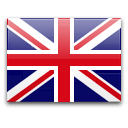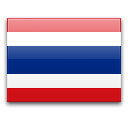An Automated External Defibrillator (AED) is a critical emergency device designed to resuscitate patients experiencing cardiac arrest. By delivering an electric shock to the heart, an AED helps restore a regular rhythm, increasing the chances of survival. When used alongside CPR, an AED is essential for treating individuals who are unconscious, not breathing, or only gasping.
In this article, we will explore the functionality of AEDs, discuss how they work, and provide step-by-step instructions on how to use them effectively in an emergency situation.
How does the AED machine work?
A healthy heart operates with regular electrical impulses (normal sinus rhythm), allowing it to pump oxygen-rich blood to the body and brain. In the case of an injury or illness, the heart rhythm may become irregular, and the heart may no longer be able to pump blood effectively. This can lead to fibrillation, causing the patient to suffer a cardiac arrest.
AED stands for "Automated External Defibrillator." In the event of a cardiac arrest, an AED can detect an abnormal cardiac rhythm that requires treatment with a shock. An AED can deliver a shock to eliminate the abnormal rhythm. This allows the heart to resume a normal rhythm.
AEDs are safe, accurate, and easy to use. They will tell you everything you need to do. Once you turn on the AED, follow the prompts. The AED will analyze if the person needs a shock and will automatically give one or tell you when to give one.

Where can I Find an AED?
When the victim is unresponsive, not breathing normally, or only gasping, you will need to start CPR and get the first aid kit and an AED if available.
An AED is typically housed in a wall-mountable cabinet, strategically placed in a visible location to ensure prompt accessibility for the public.
Ideally, AEDs should be positioned in key areas such as a company's main office, a high-traffic zone within a building, a break room, or a high-risk location like a gym. This ensures that they are easily seen and accessible to a maximum number of people in the event of an emergency.

Addressing Special Situations when using an AED
There are some special situations that you may need to consider before using an AED and placing the electrode pads.
Quickly scan the person to see if he has any of the following before applying the pads:
- If the victim has hair on the chest, that may prevent pads from sticking:
- quickly shave the area where you will place the pads using the razor from the AED carrying case.
- or remove the hair by using a second set of AED pads (if available).
- Apply the pads and press them down firmly.
- Rip the pads off forcefully to remove the chest hair.
- Reapply a new set of pads to the bare skin.
- If the chest is covered with water or sweat:
- remove the clothes if necessary
- quickly wipe the chest before attaching the pads.
- If the victim is lying in the water:
- quickly move the victim to a dry area.
- dry the chest if necessary before attaching the pads.
- If the victim is lying on snow or in a small puddle:
- you may use the AED (the chest doesn't have to be completely dry).
- dry the chest if necessary before attaching the pads.
- If the victim has an implanted defibrillator or pacemaker,
- Don't put the AED pad directly over the implanted device.
- Follow the normal steps for operating an AED.
- If the victim has a medicine patch where you need to place an AED pad,
- Don't put the AED pad directly over the medicine patch.
- Use protective gloves.
- Remove the medicated patch.
- Wipe the area clean.
- Attach the AED pads.
Adult and Child Pads
Automated External Defibrillators (AEDs) are equipped to serve individuals of various ages, including adults, children, and infants.
These life-saving devices come with specialized pads, known as electrodes, designed for specific age groups.
- Adult pads: for anyone 8 years of age or older.
- Child pads: for anyone under 8 years of age.
Adult pads deliver a higher level of energy suitable for adult-sized hearts, while child pads provide a reduced energy level to accommodate the smaller hearts of children.

How to use an Automated External Defibrillator
Follow those action steps to use an AED on an adult:
- Turn the AED and follow the prompts
- Turn it on by pushing the "on" button or lifting the lid.
- Follow the prompts, which will tell you everything you need to do.
- Attach the adult pads for anyone 8 years of age and older.
- Prepare and expose the chest.
- Locate the adult electrode pads included with the AED.
- Peel away the backing from the pads.
- Following the pictures on the pads, attach them to the person's bare chest.
- Apply the first pad to the upper-right side of the patient's chest, just below the collarbone.
- Place the second pad on the lower-left side of the chest, slightly below the armpit.
- Let the AED analyze and deliver a shock if needed
- The AED will analyze the heart rhythm.
- If a shock is needed, you will see the "shock button" flashing.
- Make sure that no one is touching the patient.
- Loudly state, "Clear," and make sure that no one is touching the patient.
- Follow the prompts and push the "shock button."
- Continue providing CPR and using the AED
- As soon as the AED gives the shock, immediately resume CPR.
- Continue to follow the AED prompts, which will guide the rescue.
- Provide CPR and use the AED until:
- The person begins to move, speak, blink, or otherwise react.
- Someone else arrives who can take turns providing CPR with you.
- Someone with more advanced training (EMS) arrives.

NOTE: Always remember to follow the specific instructions provided by the AED device you are using, as different models may have slight variations in operation.
Conclusion
The longer the brain goes without oxygen, the more severe the damage and the lower the chances of successful resuscitation. In the event of sudden cardiac arrest, the chance of survival decreases by 10% for every minute that passes without CPR and the use of an AED. Immediate and effective action is crucial to saving lives.
Therefore, understanding how to use an AED and perform CPR can make a significant difference in emergency situations, potentially doubling or tripling the chances of survival. Equip yourself with this life-saving knowledge and be prepared to act swiftly when it matters most.
Expert CPR AED Training Across Thailand: Empower Yourself to Save Lives!
As an American Heart Association training provider, we provide high-quality CPR AED training courses in Bangkok and everywhere in Thailand. Attendees will learn with confidence how to perform chest compressions, how to give rescue breaths as well as how to deploy and use an AED in case of a sudden cardiac arrest.
By training with us, we ensure our students leaving with the skills and confidence to deliver CPR and use an AED. If you’re looking for CPR AED training, get in touch with Bangkok First Aid today! We’re happy to help.




